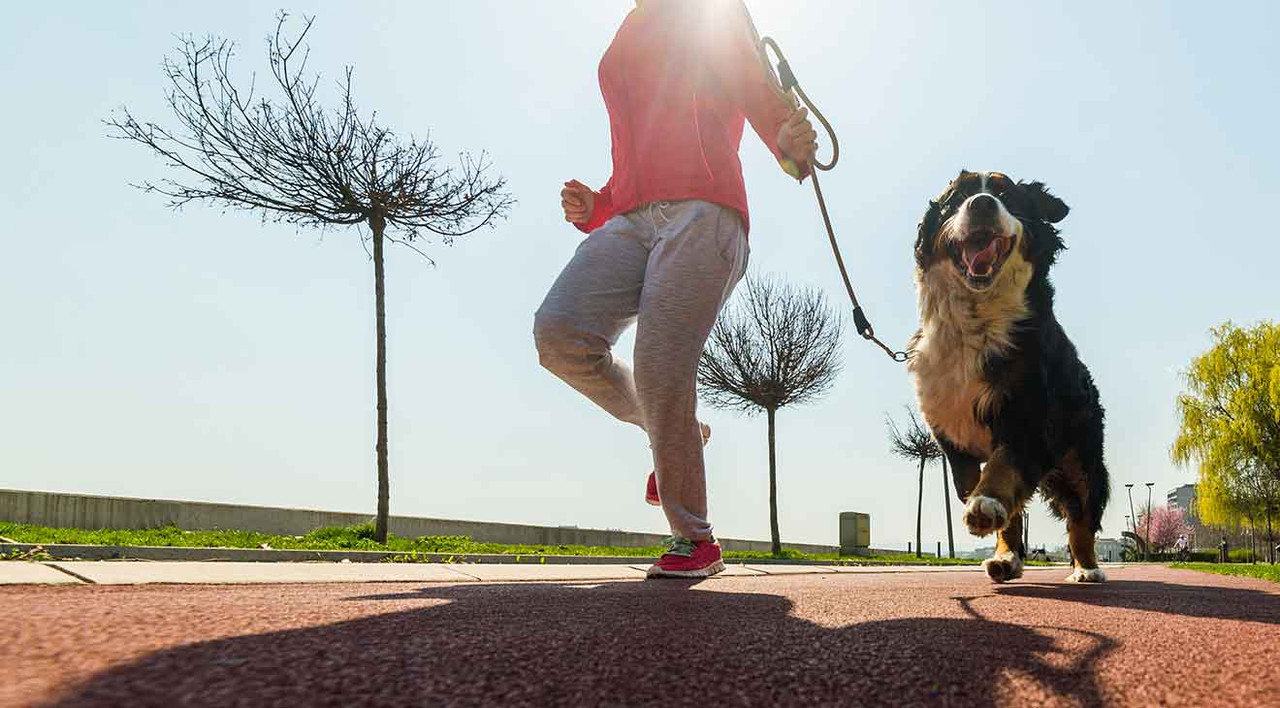Tips to Consider for Running With a Dog

 Running With Your Dog Tips
Running With Your Dog Tips
Thinking of running with your dog? Do you know how many dogs would be so jealous if they only knew? I've gone running with about 100 different dogs over the years through my dog running business, and here are my tips for running with your pup.
Tips for running with a dog
1. Keep the leash short.
I know this is obvious to those of us who've been running with dogs forever. But the number one question I receive about running with dogs goes something like, "But he's faster than me. How do I get him to run at my pace?" Easy. Don't give him much slack in the leash. I recommend you keep the dog at your left side and hold the leash in your left hand about a foot above the dog's collar (a lot depends on how tall your dog is). Then, hold the remaining slack in your right hand. Don't use a retractable leash for now unless your dog is already trained to stay at your side.
2. Ignore the initial excitement.
The very first time a dog gets to go running, there is often a lot of energy! The dog might try to jump up, bite the leash, pull or run in circles around me. This is normal, and it typically lasts about 30 seconds if I don't respond. I might calmly tell the dog "no" or physically block some of the behavior by the way I hold the leash. But for the most part, if I don't acknowledge the dog's overly excited behavior he will fall into place and run nicely at my side.
3. Use an appropriate collar.
Some dogs have better leash manners than others. For safety reasons, use a slip or martingale collar if your dog tends to pull - especially if it's snowy or icy. A dog training collar can help you teach your dog better leash manners, and eventually you might be able to switch back to a regular collar. Dogs are generally better behaved while running vs. walking because the faster pace is more natural to them.
4. Use a reflective leash.
For your early morning or your evening runs when it's dark, use a reflective leash or an LED leash for safety. You want those drivers to be able to see you and your dog easily.
5. Check your dog's paws.
While running is natural for dogs, your dog may need to ease into it depending on his energy level, weight, overall health, breed and so on. Another thing to keep in mind is your dog's paws. When a dog is used to walking on hard surfaces, his feet will naturally be calloused. But if he's not used to pavement, his feet might be a little soft. Stop and check your dog's paws every 10 minutes or so at first to make sure they're not scuffed or bleeding. You can't count on your dog to tell you if his feet hurt. Most dogs don't seem to notice until after the run is over!
You can also consider boots for a dog in the winter to prevent snow and ice from building up between his toes. Usually, it's long-haired dogs that have an issue with ice buildup. Boots can also protect your dog's feet from chemical de-icing materials placed on the sidewalks or roads.
What tips do you have for running with a dog?
Explore Popular Articles
-
How to Pick the Best Dog Collars for Large Dogs?
Mar 12, 2025Large dogs bring a special kind of joy to any household. Whether it’s the calm, noble presence
-
What Is a Traffic Leash for Dogs?
Feb 21, 2025Picture this: you’re walking your lovable Labrador, Sammy, through a bustling city side
-
What Dog Collars Are Recommended for Saint Bernards? A Comprehensive Guide
Feb 12, 2025Saint Bernards holds a special place in the hearts of dog lovers worldwide. With their iconic




